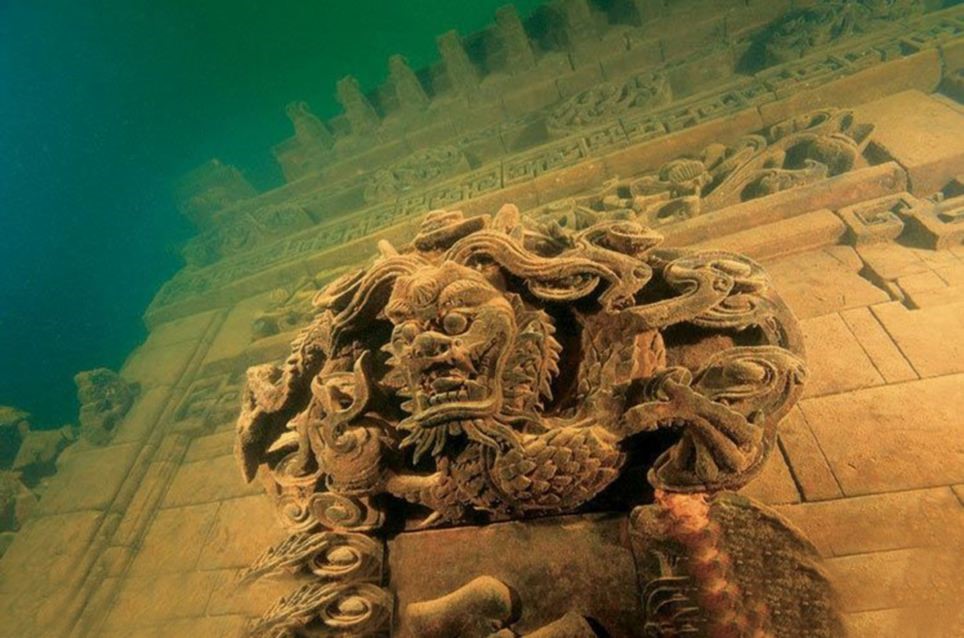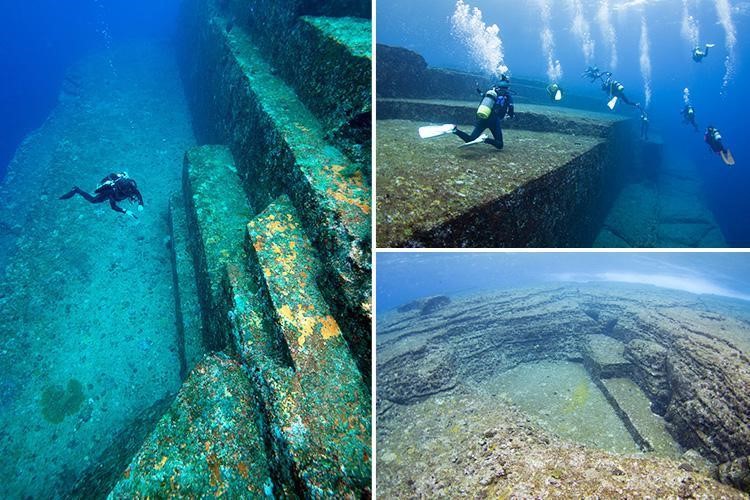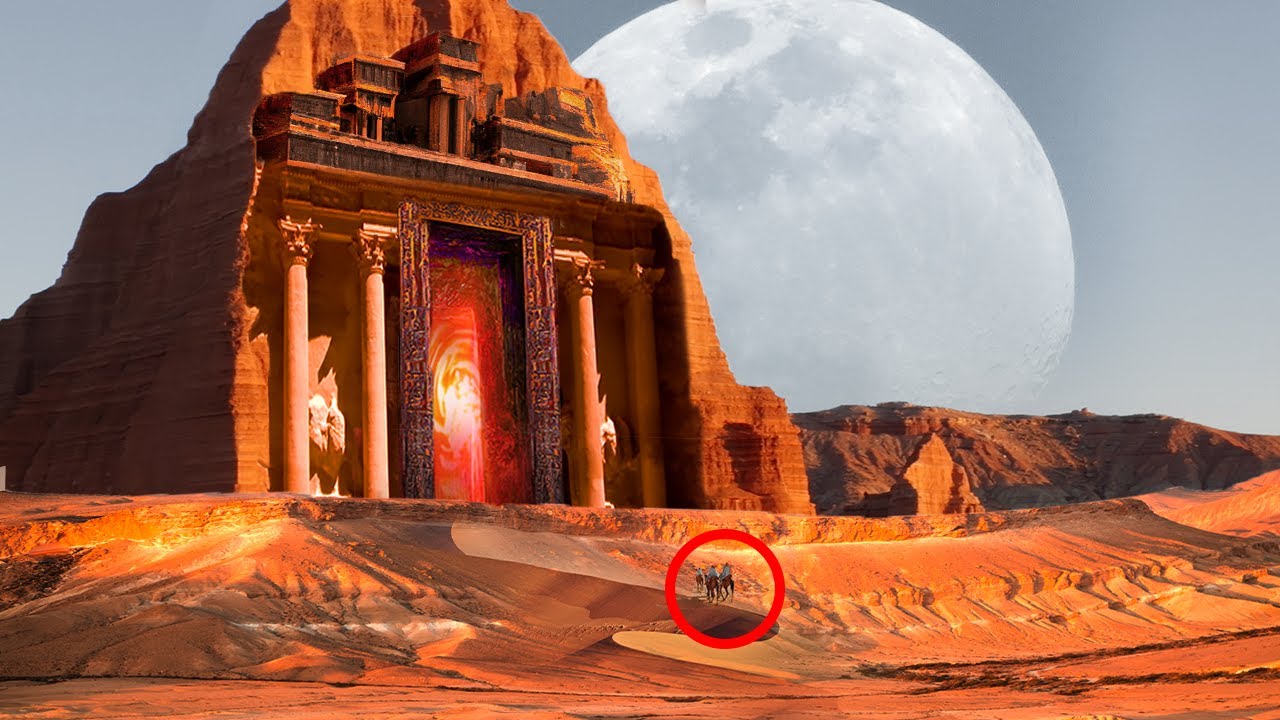Our planet is full of mysteries, and our oceans play a very important role on our planet. Though about 97% of Earth’s water is in the form of oceans, these oceans are shallow compared to the Earth’s radius– just a couple miles deep. However, Earth’s oceans keep countless secrets beneath their surface and in this article, we’ve decided to take a look at some of them.
While it may not be a lost city or million-dollar shipwreck, the Molinere Underwater Sculpture Park is one of the most exciting things you can see underwater.
Located in the Caribbean Sea off the west coast of Grenada, the park was created by British sculptor Jason deCaires Taylor.
In May 2006 the world’s first underwater sculpture park was open for public viewing.
Taylor′s aim was to engage local people with the underwater environment that surrounds them using his works which are derived from life casts of the local community.
He installed concrete figures onto the ocean floor, mostly consisting of a range of human forms, from solitary individuals to a ring of children holding hands, facing into the oceanic currents
Check out some of the images here:



Alright, let’s travel from the Caribbean towards China, there, we’ll find the so-called Ancient Lion City. Located at around 131 feet below the surface, this sunken city tells a fascinating story.
Referred to as the Lion City, this ancient Asian Atlantis is located in a lake between the Five Lion mountains. Looking back in history, we’ll find that this city was once referred to as Shi Cheng, the center of politics and economics in the eastern province of Zhejiang.
However, in 1959, the Chinese Government decided they needed a new hydroelectric power station, so they built a manmade lake.
After they constructed a dam, the ancient historical metropolis was slowly flooded until it was completely submerged by the Qiandao Lake. The ancient city has become a tourist destination for divers who are eager to explore its underwater beauties.
Here are some images:


From China, we move to Japan where we will find one of the most controversial underwater structure on planet Earth.
Called the Yonaguni underwater complex, the massive stones are considered by may as evidence of an ancient metropolis that eventually sunk, some 13,000 years ago.
Experts like Professor Masaaki Kimura, from the University of the Ryukyu, believe these ‘structures’ date back to 8,000 BC. Kimura suggests that these are monuments are made by man and that they are proof of an ancient civilization that vanished beneath the ocean.
All sorts of theories have been used to get to the bottom of the underwater complex of Yonguni. No one is quite sure how these massive slabs got there and theories range from ancient civilizations, aliens, and natural formations. Some researchers and historians believe that the structures at Yonaguni could be the ancient remains of Mu, a fabled Pacific civilization rumored to have vanished beneath the Ocean.
Here are some images:


Let’s travel back to the Atlantic, where we find what many believe is the resting place of the mythical continent/city Described by Greek Philosopher Plato: Atlantis.
A massive pyramid stands at the bottom of the ocean, and many researchers are convinced more structures are located in its vicinity.
There are many crazy discoveries being made every day, and one such discovery–even though highly disputed—was made in Portugal as news reports claimed a massive underwater pyramid was found just off the Islands of São Miguel and Terceira in the Azores.
The Azores are a set of nine volcanic islands that are located over a thousand kilometers from Portugal’s capital, Lisbon. Strangely, the underwater pyramid is located exactly where ancient Greek philosopher Plato said Atlantis was located. If we look at Plato’s dialogues, we will see that Atlantis was located on an island in the Atlantic Pelagos “Atlantic Sea” “in front of” the Pillars of Hercules. That’s where the Azores are.
From the Atlantis, we move towards the Baltic Sea where we explore the so-called Baltic sea anomaly.
The Baltic Sea anomaly is a 60-meter (200 ft) diameter circular rock formation on the floor of the northern Baltic Sea, at the center of the Bothnian Sea, discovered by Peter Lindberg, Dennis Åsberg and their Swedish “Ocean X” diving team in June 2011. The team reported that the formation rests on a pillar and includes a structure similar in appearance to a staircase, leading to a dark hole.
A sample recovered by divers was reportedly found to contain limonite and goethite. Israeli geologist Steve Weiner claimed that these materials are “metals which nature could not reproduce itself”
Wild theories have surfaced ever since Ocean X discovered the mysterious object. From underwater secret bases, Alien Craft, and Ancient Technology. Nonetheless, despite its curious shape and form, the object may be nothing more than a curious geological formation.
I am the Librarian, and I, together with the guardians of the Ancient Library, curate content for this site. Welcome, and enjoy your stay.




